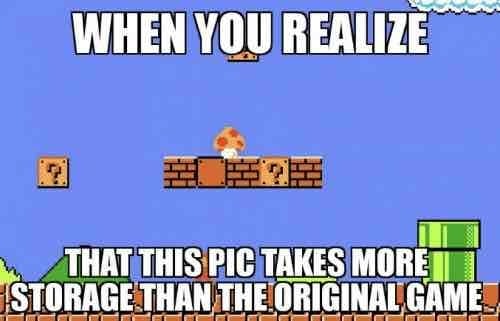this post was submitted on 01 Jul 2024
669 points (99.4% liked)
196
17163 readers
1706 users here now
Be sure to follow the rule before you head out.
Rule: You must post before you leave.
Other rules
Behavior rules:
- No bigotry (transphobia, racism, etc…)
- No genocide denial
- No support for authoritarian behaviour (incl. Tankies)
- No namecalling
- Accounts from lemmygrad.ml, threads.net, or hexbear.net are held to higher standards
- Other things seen as cleary bad
Posting rules:
- No AI generated content (DALL-E etc…)
- No advertisements
- No gore / violence
- Mutual aid posts require verification from the mods first
NSFW: NSFW content is permitted but it must be tagged and have content warnings. Anything that doesn't adhere to this will be removed. Content warnings should be added like: [penis], [explicit description of sex]. Non-sexualized breasts of any gender are not considered inappropriate and therefore do not need to be blurred/tagged.
If you have any questions, feel free to contact us on our matrix channel or email.
Other 196's:
founded 2 years ago
MODERATORS
you are viewing a single comment's thread
view the rest of the comments
view the rest of the comments

A jpeg image is designed to hold any photograph. It can potentially display millions of colors, and needs to contain that data for possibly millions of pixels of on-screen data. Jpeg image compression does save some space compared to a bitmap which is literally 3 bytes of color data for every pixel in the image, but there's only so optimized it can get before it can't be used to store any possible photograph.
The image above is 500x321 pixels with 32-bit ARGB color; so each pixel not only has independent red, green and blue data, but also 8 bits of transparency data.
Super Mario Bros runs on the Nintendo Entertainment System, which has a working resolution of 256 x240 pixels. It has the capability of displaying 25 colors on screen simultaneously out of a total possible palette of 54 usable colors. It draws the background and foreground layers as "tiles" so you can store whole tiles in memory and then repeat them, and then on top of that it can draw hardware sprites which is how things that move more on screen like Mario, enemies etc. are made.
Things like the animations of the question mark blocks which seem to shine or blink a bit, that's done by cycling the colors that the sprite is being drawn with. Big Mario and Fire Mario are the same sprite but color swapped. The bushes and the clouds are the same shape, but different colors. The super mushroom and power mushroom are the same sprite but different colors. The underworld levels are just different colors on the same sprites as the overworld.
The sound chip on the NES is very simple, it has five voice polyphony and can make two square waves, one triangle wave, one hiss-like noise, and one PCM sample sound (not used to my knowledge in SMB1; it's how the steel drum sounds in the SMB3 sound track were made) and so what is stored on the cartridge for audio is more like sheet music than recorded sound. An mp3 file of the Ground Theme would also likely be larger than the entire game.
SMB1 is also just...a VERY primitive game. It cannot scroll vertically (SMB2, the one that's Doki Doki Panic in Japan, it can scroll vertically OR horizontally but not both at the same time; SMB3 could do both at the same time as showcased by the raccoon tail powerup, but it required a RAM expansion built into the cartridge) It can't go backwards because it doesn't record the state of objects that have scrolled off the screen. It has no save system or even a password system.
Finally, the game was made in 6502 assembly with the specific hardware of the NES in mind; which saves a lot of resources compared to all the abstractions needed for higher level languages and their abstractions.
it's also worth mentioning that JPEG was designed for photographs, where there's a very high likelihood that each pixel of an image will be a different colour to those immediately next to it. Because of this, JPEG not only has higher file sizes for text and 2d graphics/pixel art than PNG and especially a compressed SVG (which would far and away be the best method of representing the mario image - it's close to the same "tile" thing but transferrable and well supported), but it also results in artifacts and lower quality of the image.